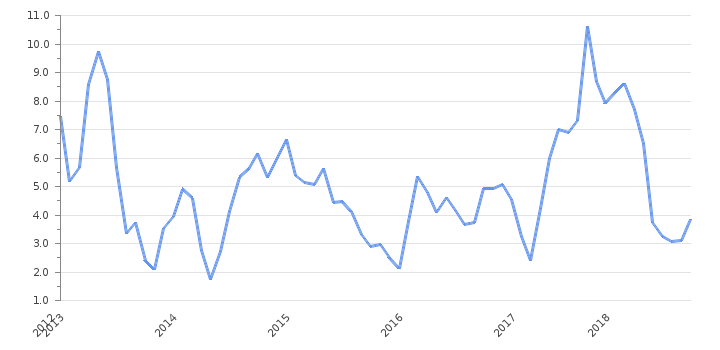Mexico, a vibrant and diverse country, has been grappling with economic challenges, with one significant factor being the inflation rate. Inflation is a crucial economic indicator that reflects the general increase in prices of goods and services over time. This article delves into the current state of Mexico’s inflation rate, exploring the factors contributing to its fluctuations, recent trends, and the potential implications for the country’s economy.
Current Inflation Landscape:
As of the latest available data, Mexico’s inflation rate has experienced fluctuations in recent years. Understanding the current inflation landscape is essential for policymakers, businesses, and citizens alike. The Banco de México, the country’s central bank, plays a pivotal role in monitoring and controlling inflation, aiming for a stable and sustainable economic environment.
Factors Influencing Inflation:
Several factors contribute to fluctuations in Mexico’s inflation rate. One primary driver is the global economic environment, as Mexico heavily relies on international trade. Changes in commodity prices, particularly oil, can have a profound impact on the country’s inflation dynamics. Additionally, domestic factors such as fiscal and monetary policies, labor market conditions, and consumer demand play crucial roles in shaping inflation trends.
Impact of Exchange Rates:
The exchange rate is a key determinant of inflation in Mexico. Given the country’s extensive trade relationships, a depreciation of the Mexican peso can lead to higher import prices, contributing to inflationary pressures. Currency fluctuations, influenced by global economic conditions and market sentiments, necessitate vigilant monitoring by policymakers to maintain stability.
Government Policies and Reforms:
Government policies and structural reforms also influence inflation dynamics. Fiscal policies, such as taxation and public spending, can have both short-term and long-term effects on inflation. Structural reforms aimed at improving competitiveness, efficiency, and productivity in various sectors of the economy can contribute to a more stable inflation environment over time.
Inflation Targeting:
The Banco de México follows an inflation targeting framework, where it sets an explicit inflation target and adjusts monetary policy to achieve it. This approach helps anchor inflation expectations and provides a transparent framework for economic agents. However, achieving the target requires a delicate balance between promoting economic growth and controlling inflation, often presenting challenges for policymakers.
Recent Trends:
Examining recent trends in Mexico’s inflation rate provides insights into the country’s economic health. Factors such as the COVID-19 pandemic, supply chain disruptions, and fluctuations in energy prices have influenced inflation in recent years. Analyzing the data over specific periods allows for a deeper understanding of the underlying causes and potential future developments.
Implications for the Economy:
The implications of Mexico’s inflation rate extend beyond the realm of economics. High inflation can erode purchasing power, negatively impacting households and businesses. It may also lead to uncertainties in financial markets, affecting investment decisions. Policymakers must carefully navigate these challenges to ensure a balanced approach that fosters economic growth while maintaining price stability.
Conclusion:
Mexico’s inflation rate is a multifaceted economic indicator influenced by both domestic and global factors. Understanding the complexities of inflation dynamics is crucial for policymakers, businesses, and citizens to make informed decisions. As Mexico continues to navigate economic challenges, a proactive and strategic approach to managing inflation will be essential for sustaining a healthy and resilient economy.



